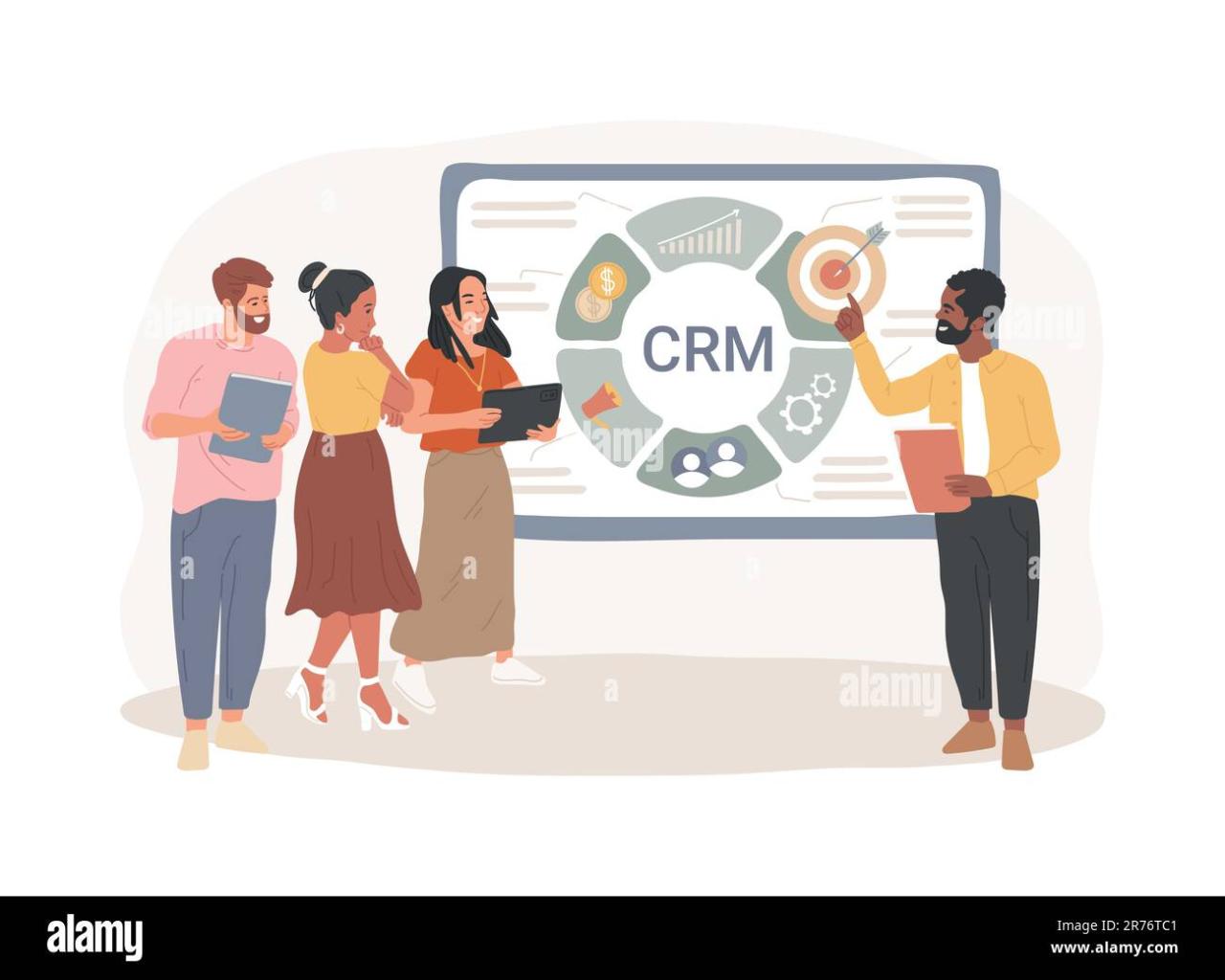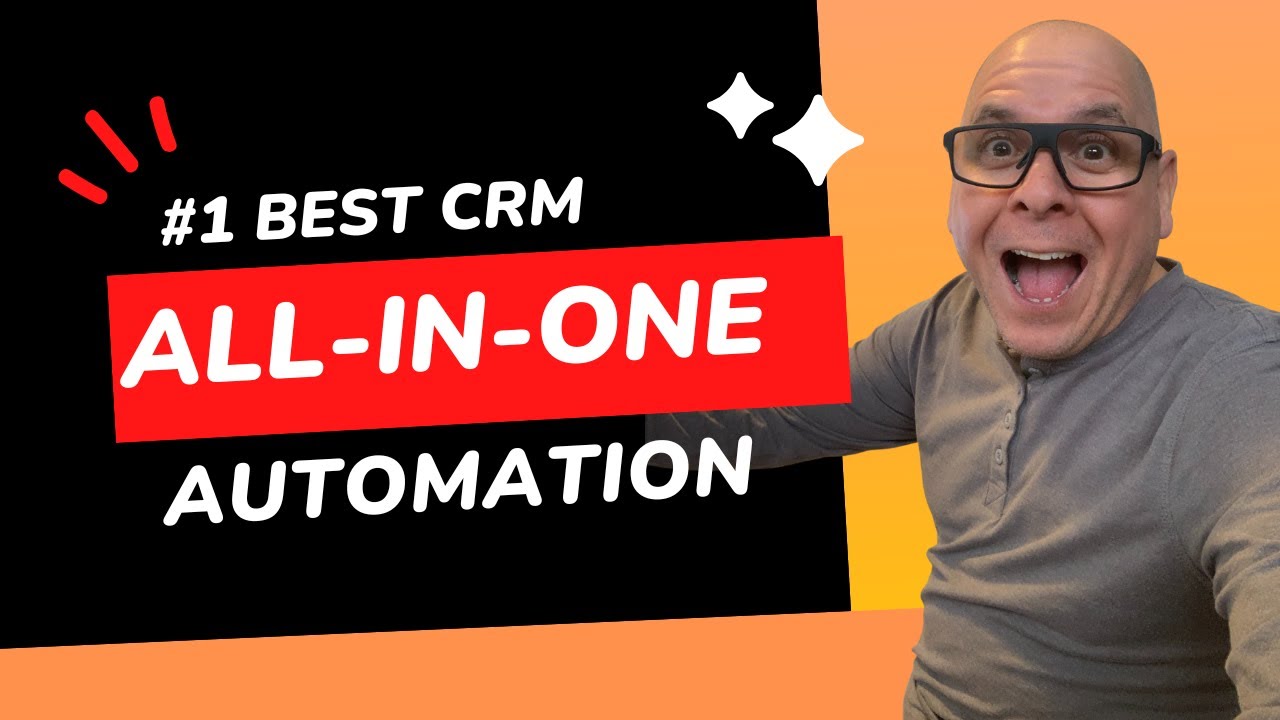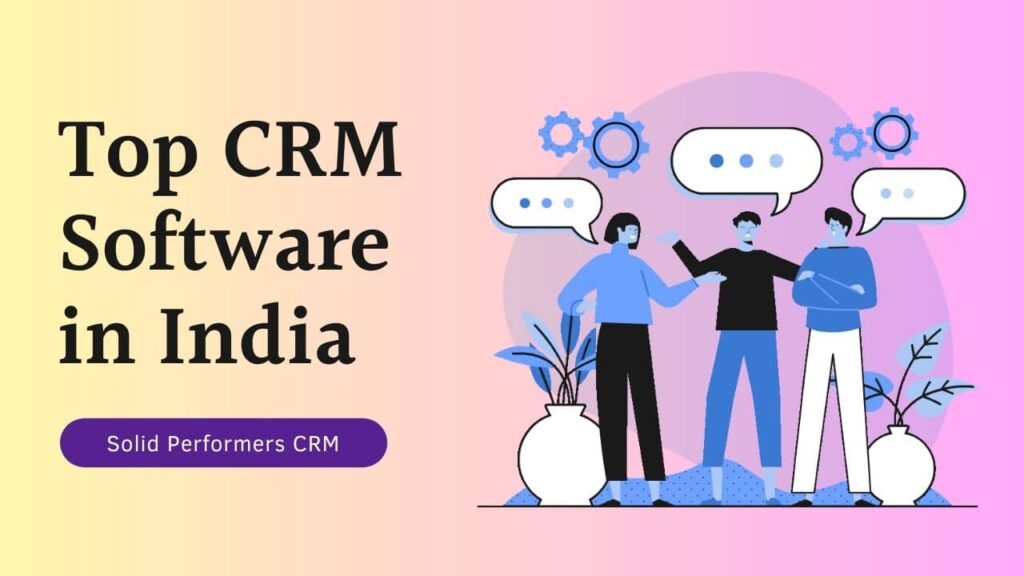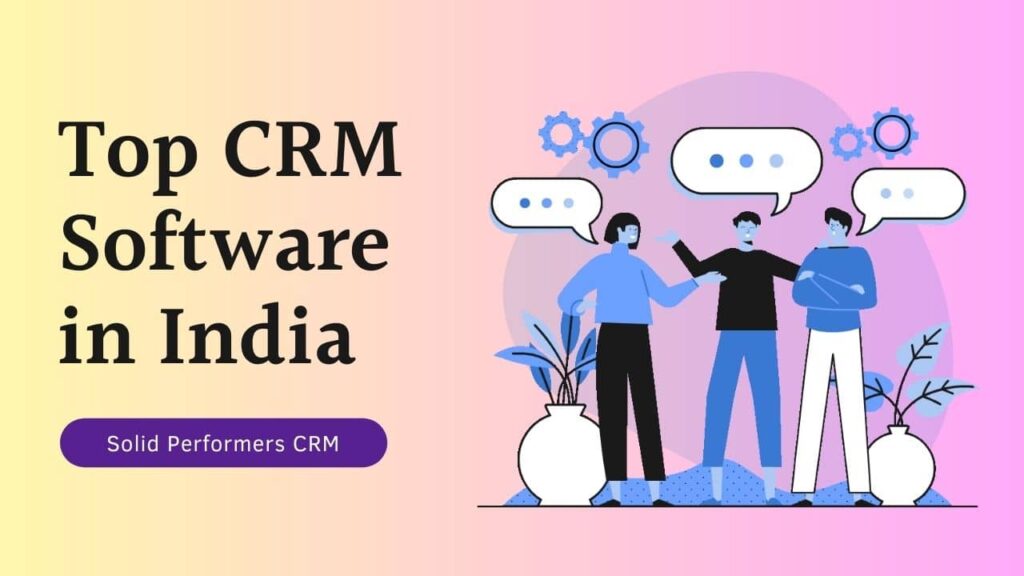Best CRM for small service businesses isn’t just about software; it’s about streamlining operations and boosting growth. Finding the right system can transform how you manage clients, schedule appointments, and track progress, ultimately leading to increased efficiency and profitability. This guide explores key features, popular options, and implementation strategies to help you choose the perfect CRM solution tailored to your specific service business needs.
From plumbing and cleaning to consulting and beyond, diverse service businesses share common challenges: managing appointments, tracking client interactions, and generating reports. A well-chosen CRM addresses these issues by centralizing client data, automating tasks, and providing valuable insights into business performance. This exploration will help you navigate the landscape of CRM options, assess their suitability, and confidently select a system that aligns with your budget and growth aspirations.
Defining “Best” CRM for Small Service Businesses
Choosing the right Customer Relationship Management (CRM) system is crucial for the success of any small service business. The ideal CRM streamlines operations, improves customer relationships, and ultimately boosts profitability. However, the definition of “best” varies significantly depending on the specific needs and context of the business.
A “best” CRM for a small service business balances several key factors. Budget constraints are often paramount, necessitating cost-effective solutions. User-friendliness is essential; a complex system will likely be underutilized and fail to deliver its promised benefits. Scalability is also important; the system should be able to adapt and grow with the business as it expands its client base and service offerings.
Finally, the CRM must seamlessly integrate with existing business tools, such as accounting software and scheduling applications, to avoid data silos and operational inefficiencies.
Types of Service Businesses and Their Unique CRM Needs
The diverse landscape of small service businesses presents unique CRM requirements. A plumbing company, for instance, will prioritize scheduling and dispatching capabilities, while a cleaning service might focus on route optimization and team management. A consulting firm, on the other hand, may place greater emphasis on project management and client communication features. Understanding these nuances is vital in selecting the appropriate CRM.
For example, a plumbing company might need a CRM that allows for easy appointment scheduling, technician dispatch based on location, and quick access to customer history (previous service calls, addresses, payment information). A cleaning service would benefit from a system that manages recurring appointments, tracks cleaning supplies inventory, and allows for efficient team assignment to different clients or locations.
A consulting firm, meanwhile, might need a CRM capable of tracking project milestones, managing client documents, and facilitating team collaboration on projects.
CRM Feature Importance Across Different Service Business Types
| CRM Feature | Plumbing | Cleaning | Consulting |
|---|---|---|---|
| Contact Management | High | High | High |
| Scheduling/Dispatching | Very High | High | Medium |
| Invoicing/Billing | High | High | High |
| Reporting/Analytics | Medium | Medium | High |
| Project Management | Low | Low | Very High |
| Team Collaboration | Medium | High | Very High |
The table above illustrates the relative importance of different CRM features for three example service businesses. “Very High” indicates a critical need, “High” signifies significant importance, “Medium” represents moderate importance, and “Low” suggests a less crucial role. This prioritization helps small service businesses focus on selecting a CRM that best addresses their unique operational requirements.
Top CRM Features for Small Service Businesses

Choosing the right CRM can significantly impact a small service business’s efficiency and growth. The best CRMs offer a blend of features designed to streamline operations, improve client relationships, and provide valuable insights into business performance. This section will explore key features that are particularly beneficial for small service businesses.
Effective CRM systems offer a range of features that go beyond simple contact management. They act as central hubs, integrating various aspects of your business and providing a unified view of your clients and operations. This integrated approach eliminates data silos and streamlines workflows, leading to increased productivity and improved decision-making.
Streamlined Appointment Scheduling and Client Communication
Efficient appointment scheduling and clear communication are critical for service businesses. A good CRM should offer features like online booking, automated reminders, and integrated communication channels. For example, a client can book an appointment directly through the business website, which is then automatically added to the CRM calendar and sent confirmations and reminders via email or SMS. This eliminates the back-and-forth of phone calls and emails, freeing up staff time and reducing the likelihood of missed appointments.
Furthermore, integrated communication tools allow for seamless interaction with clients through the CRM platform itself, maintaining a complete history of all communications in one place. This might include email marketing campaigns directly targeted at specific client segments, based on their history and preferences within the CRM database.
CRM Integration with Other Business Tools
Integrating your CRM with other business tools significantly boosts efficiency. Connecting your CRM to accounting software, for example, automates invoice generation and payment tracking. When a service is completed and recorded in the CRM, the system can automatically generate an invoice in your accounting software, eliminating manual data entry and reducing the risk of errors. Similarly, integrating with payment gateways allows clients to pay invoices directly through the CRM, streamlining the payment process and reducing delays.
This integration creates a seamless workflow from service delivery to payment, improving cash flow and simplifying financial management. Imagine a scenario where a client books a service online, receives automated reminders, and pays directly through the integrated payment gateway—all without leaving the CRM platform. This level of automation drastically reduces administrative overhead.
Essential Reporting Capabilities
Comprehensive reporting is crucial for understanding business performance and making data-driven decisions. A robust CRM should offer a range of reports that provide key insights into various aspects of your business.
The following are essential reporting capabilities:
- Client Acquisition Cost (CAC): This metric tracks the cost of acquiring a new client, helping you assess the effectiveness of your marketing and sales efforts. A lower CAC indicates higher efficiency in acquiring new clients.
- Customer Lifetime Value (CLTV): This metric estimates the total revenue a client will generate throughout their relationship with your business. A high CLTV signifies loyal, high-value clients.
- Revenue by Service: This report shows the revenue generated by each service offered, allowing you to identify your most profitable services and allocate resources accordingly.
- Client Churn Rate: This metric tracks the percentage of clients who stop using your services over a given period. A high churn rate suggests potential issues that need to be addressed.
- Sales Pipeline Analysis: This provides a visual representation of your sales process, allowing you to identify bottlenecks and improve sales efficiency.
Popular CRM Options and Their Suitability

Choosing the right CRM can significantly impact a small service business’s efficiency and growth. This section compares three popular options – HubSpot, Zoho CRM, and Freshworks CRM – to help you determine which best fits your needs. We’ll examine their pricing, core features, ease of use, and how effectively they handle key service business functions.
HubSpot, Zoho CRM, and Freshworks CRM Comparison, Best crm for small service business
These three CRMs represent different approaches to customer relationship management, each with strengths and weaknesses. Understanding these differences is crucial for selecting the platform that aligns with your business size, budget, and specific requirements.
| Feature | HubSpot | Zoho CRM | Freshworks CRM |
|---|---|---|---|
| Pricing Model | Freemium; tiered pricing with increasing features and user limits. Can become expensive for larger teams. | Tiered pricing; offers a broader range of plans, including free options with limited functionality. Generally more affordable than HubSpot. | Tiered pricing; competitive pricing with a focus on scalability. Offers a good balance of features and cost. |
| Ease of Use | Intuitive interface, but the extensive feature set can be overwhelming for new users. Requires a learning curve. | User-friendly interface; generally considered easy to navigate and learn, even for less tech-savvy users. | User-friendly; straightforward interface and intuitive navigation. Easy to implement and use. |
| Appointment Scheduling | Integrates well with scheduling tools, offering robust appointment management capabilities. | Offers built-in scheduling features, but integration with third-party tools may be required for advanced functionalities. | Provides solid appointment scheduling features; allows for customization and integration with other apps. |
| Task Management | Powerful task management tools, allowing for team collaboration and efficient workflow management. | Offers basic task management; may require third-party integrations for more advanced functionalities. | Provides good task management capabilities, enabling effective team collaboration and task assignment. |
| Customer Support | Extensive documentation and support resources; offers various support channels. | Provides decent support, but the quality can vary depending on the support channel. | Offers reliable customer support with multiple channels available. |
| Pros | Powerful marketing automation, robust features, strong reporting. | Affordable, user-friendly, wide range of features. | Easy to use, scalable, good value for money. |
| Cons | Can be expensive, steep learning curve, complex for smaller businesses. | Some features may require additional integrations, reporting could be improved. | Limited advanced features compared to HubSpot. |
Handling Key Service Business Functions
Each CRM handles essential service business functions differently. Let’s look at appointment scheduling, task management, and customer support in more detail.For example, a small plumbing business could use HubSpot’s scheduling tools to allow customers to book appointments online, automatically adding them to the service technician’s calendar. Zoho CRM might require integrating with a separate scheduling app, while Freshworks CRM offers a built-in solution that may suffice.
Task management, vital for tracking service calls and follow-ups, is robust in HubSpot, more basic in Zoho CRM, and efficient in Freshworks CRM. Customer support features, such as ticketing systems and knowledge bases, are comprehensive in HubSpot, adequate in Zoho CRM, and reliable in Freshworks CRM. The best choice depends on the specific needs and budget of the small service business.
Implementing and Managing a CRM System: Best Crm For Small Service Business
Successfully implementing a CRM system requires careful planning and execution. A phased approach, focusing on user training and data migration, minimizes disruption and maximizes adoption. Continuous monitoring and adjustments are key to long-term success.Setting up a CRM system for a small service business involves several key steps. Effective implementation hinges on a well-defined strategy that considers the specific needs of the business and its employees.
CRM System Setup Steps
The initial setup involves selecting the appropriate CRM software, configuring it to match your business processes, and migrating existing customer data. This process requires careful planning to minimize disruptions to daily operations. Following a structured approach ensures a smoother transition.
- Software Selection and Configuration: Choose a CRM that aligns with your budget and business needs. Configure the system to reflect your sales process, service workflows, and reporting requirements. This often involves customizing fields, workflows, and dashboards.
- Data Migration: Carefully transfer existing customer data from previous systems (spreadsheets, databases, etc.) into the new CRM. Data cleansing and validation are crucial at this stage to ensure data accuracy and consistency. Employ a phased approach, migrating data in manageable chunks to allow for error correction and validation.
- User Training and Onboarding: Provide comprehensive training to all employees who will be using the CRM. This should cover basic navigation, data entry procedures, reporting functions, and best practices. Ongoing support and access to resources are essential for maintaining user proficiency.
- System Testing and Refinement: Thoroughly test the system after setup and data migration to identify any bugs or inconsistencies. Make necessary adjustments to optimize the system’s performance and user experience. This iterative process is essential for ensuring the CRM meets your business needs effectively.
Maintaining Data Hygiene
Maintaining accurate and up-to-date customer information is crucial for effective CRM usage. Poor data quality leads to inaccurate reporting, inefficient workflows, and ultimately, lost revenue. Proactive data hygiene strategies are vital for success.Data hygiene involves implementing processes and tools to ensure data accuracy, consistency, and completeness. This includes regular data cleansing, validation, and deduplication. Training employees on proper data entry procedures is also crucial.
For example, establishing clear guidelines for data entry, such as standardized formats for names, addresses, and phone numbers, ensures consistency. Regular data audits can identify and correct inconsistencies. Implementing automated data validation tools can further enhance data quality.
Overcoming Implementation Challenges
Implementing a CRM system can present challenges, particularly resistance to change from employees accustomed to existing methods. Addressing these challenges proactively is crucial for successful implementation.One common challenge is employee resistance to adopting new technology. This can stem from fear of the unknown, lack of training, or perceived inconvenience. Addressing this requires proactive communication, comprehensive training, and demonstrating the benefits of the CRM system.
Highlighting how the CRM can simplify their tasks and improve efficiency can encourage adoption. For example, showing how the CRM streamlines customer communication or reduces administrative burden can alleviate concerns. Another challenge is insufficient data migration planning. Failure to properly plan and execute data migration can lead to data loss, inconsistencies, and system errors. A phased approach to migration, along with thorough data validation, can mitigate these risks.
Finally, inadequate user training can result in low adoption rates and inefficient CRM usage. Providing comprehensive training, ongoing support, and easily accessible resources can ensure employees effectively use the system.
Measuring the ROI of a CRM System
Implementing a CRM system represents a significant investment for a small service business. Therefore, accurately measuring its return on investment (ROI) is crucial to justify the expense and demonstrate its value to stakeholders. This involves tracking key performance indicators (KPIs) to assess its effectiveness and demonstrate a clear link between CRM usage and business growth.Tracking KPIs to demonstrate the value of a CRM system requires a strategic approach.
It’s not enough to simply implement the software; you need to define measurable goals and track progress towards them. This ensures you can attribute improvements directly to the CRM and not other factors.
Key Performance Indicators (KPIs) for CRM ROI Measurement
Effective CRM ROI measurement relies on monitoring several key performance indicators. These KPIs should be chosen based on the specific goals of the business and the features implemented within the CRM system. Regular monitoring and analysis of these metrics provide insights into the system’s overall effectiveness.
- Lead Conversion Rate: This metric tracks the percentage of leads that convert into paying customers. A CRM system, with its lead management and tracking capabilities, should demonstrably improve this rate.
- Customer Acquisition Cost (CAC): This measures the cost of acquiring a new customer. A well-implemented CRM can streamline sales processes, reducing the time and resources needed to acquire customers, thus lowering CAC.
- Customer Lifetime Value (CLTV): This indicates the total revenue a business expects to generate from a single customer over their entire relationship. CRM systems improve customer retention, leading to a higher CLTV.
- Sales Cycle Length: This measures the time it takes to close a deal. CRM systems automate tasks and improve communication, shortening the sales cycle and accelerating revenue generation.
- Customer Satisfaction (CSAT): Measured through surveys or feedback mechanisms, high CSAT indicates improved customer experience facilitated by efficient communication and personalized service enabled by the CRM.
- Employee Productivity: This measures the efficiency of sales and customer service teams. CRM systems automate repetitive tasks, freeing up employee time for higher-value activities, resulting in increased productivity.
Attributing Improvements to CRM Usage
Demonstrating a direct link between CRM implementation and business improvements requires careful data analysis. For instance, comparing key metrics
- before* and
- after* CRM implementation highlights the impact.
For example, a small plumbing business might observe a 15% reduction in sales cycle length after implementing a CRM, directly attributable to improved lead management and task automation. Simultaneously, they might see a 10% increase in customer satisfaction scores due to improved communication and personalized service facilitated by the CRM’s features. These improvements directly translate to higher revenue and improved profitability.
Visual Representation of CRM and Business Growth
Imagine a graph with two lines. The X-axis represents time (months since CRM implementation), and the Y-axis represents revenue. One line (Line A) represents revenue before CRM implementation, showing a relatively slow, steady, or even stagnant growth. The second line (Line B), representing revenue after CRM implementation, shows a steeper, more rapid upward trend. The difference between Line B and Line A visually demonstrates the incremental revenue growth directly attributable to the improved efficiency, customer satisfaction, and ultimately, increased sales facilitated by the CRM system.
The gap between the lines widens over time, illustrating the compounding effect of the CRM on business growth. For instance, if Line A shows a consistent $10,000 monthly revenue, and Line B reaches $13,000 after three months and continues to rise, the visual representation clearly showcases the positive impact of the CRM.
Closing Summary

Selecting the best CRM for your small service business is a crucial step towards enhancing efficiency and driving growth. By carefully considering factors like budget, ease of use, and essential features, you can find a system that streamlines operations, improves client communication, and provides valuable data-driven insights. Remember that the ideal CRM is not a one-size-fits-all solution; the best choice depends on your specific business needs and long-term goals.
Investing time in research and planning will ensure you choose a system that empowers your business to thrive.
Popular Questions
What is the average cost of a CRM for a small service business?
Costs vary widely depending on features and the number of users. Expect to find options ranging from free plans with limited functionality to more robust paid plans costing several hundred dollars per month.
How long does it typically take to implement a CRM system?
Implementation time depends on the complexity of the system and the amount of data being migrated. It can range from a few weeks to several months.
Can I integrate my CRM with existing business tools?
Many CRMs offer integrations with popular accounting software, payment gateways, and other business tools. Check the specific CRM’s capabilities before choosing.
What if my employees resist using the new CRM system?
Address concerns proactively through training, clear communication, and demonstrating the system’s benefits. Highlight how the CRM can simplify their tasks and improve their workflow.

